The United Arab Emirates (UAE) is home to some of the world’s most advanced and well-connected international airports. With millions of passengers passing through every year, these airports serve as major transit hubs linking Europe, Asia, Africa, and the Americas. Whether you’re visiting for tourism, business, or as a stopover, the international airports in UAE offer top-tier services, seamless connectivity, and state-of-the-art facilities.
In this article, we will take an in-depth look at all the international airports in UAE, their facilities, airlines, passenger statistics, and much more. If you are planning a trip to or through the UAE, this guide will help you understand the country’s aviation landscape better.
1. Dubai International Airport (DXB) – The World’s Busiest Hub
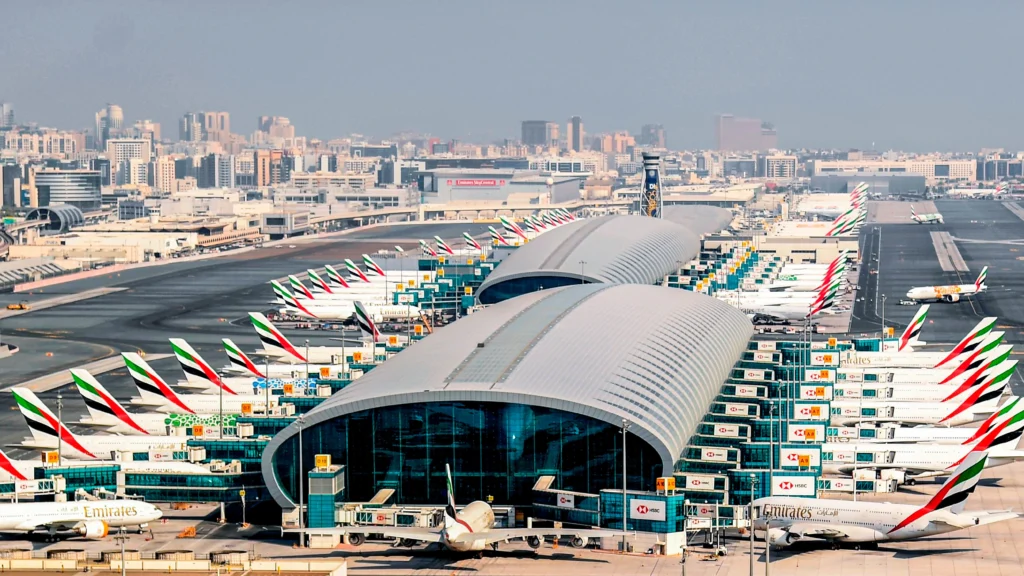
Overview
Dubai International Airport (DXB) is the largest and busiest airport in the UAE and one of the top international airports worldwide. It serves as the primary hub for Emirates Airlines and flydubai, handling over 88 million passengers annually.
Facilities and Services
- Terminals: DXB has three terminals catering to different airlines and travel classes.
- Lounges: Exclusive lounges, including the Emirates First Class Lounge and Marhaba Lounge.
- Duty-Free Shopping: One of the world’s best airport shopping experiences.
- Hotels: The Dubai International Hotel is located within Terminal 3 for transit passengers.
- Transport: Metro, taxis, buses, and car rentals are available.
Key Airlines
2. Abu Dhabi International Airport (AUH) – A Rising Global Hub

Overview
Abu Dhabi International Airport (AUH) is the second-largest airport in the UAE and the primary base for Etihad Airways. The airport sees over 20 million passengers per year and is continuously expanding to improve connectivity and passenger experience.
Facilities and Services
- Terminals: Three passenger terminals with ultra-modern services.
- Lounges: Etihad Premium Lounge and other VIP services.
- Entertainment & Shopping: Duty-free outlets, high-end brands, and relaxation zones.
- Transport: Public buses, taxis, and future metro connectivity.
Key Airlines
- Etihad Airways
- Air India
- EgyptAir
- Lufthansa
- KLM Royal Dutch Airlines
3. Sharjah International Airport (SHJ) – The Budget Carrier’s Favorite
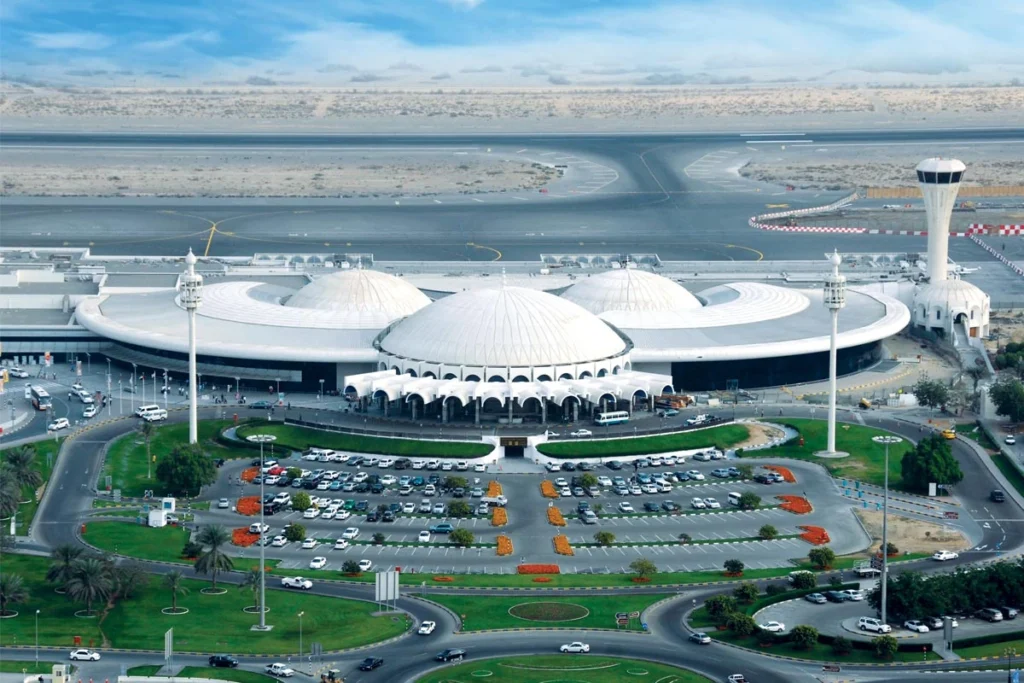
Overview
Sharjah International Airport (SHJ) is the hub for Air Arabia, the Middle East’s first low-cost airline. It serves over 12 million passengers annually and offers affordable travel options to over 150 destinations.
Facilities and Services
- Passenger Terminals: One main terminal with extensive facilities.
- Lounges: Business-class lounges with free Wi-Fi.
- Transport: Shuttle buses, car rentals, and easy road access to Dubai.
- Cargo Services: A major hub for air cargo operations.
Key Airlines
- Air Arabia
- Air India Express
- Pakistan International Airlines
- Turkish Airlines
4. Al Maktoum International Airport (DWC) – The Future of Aviation
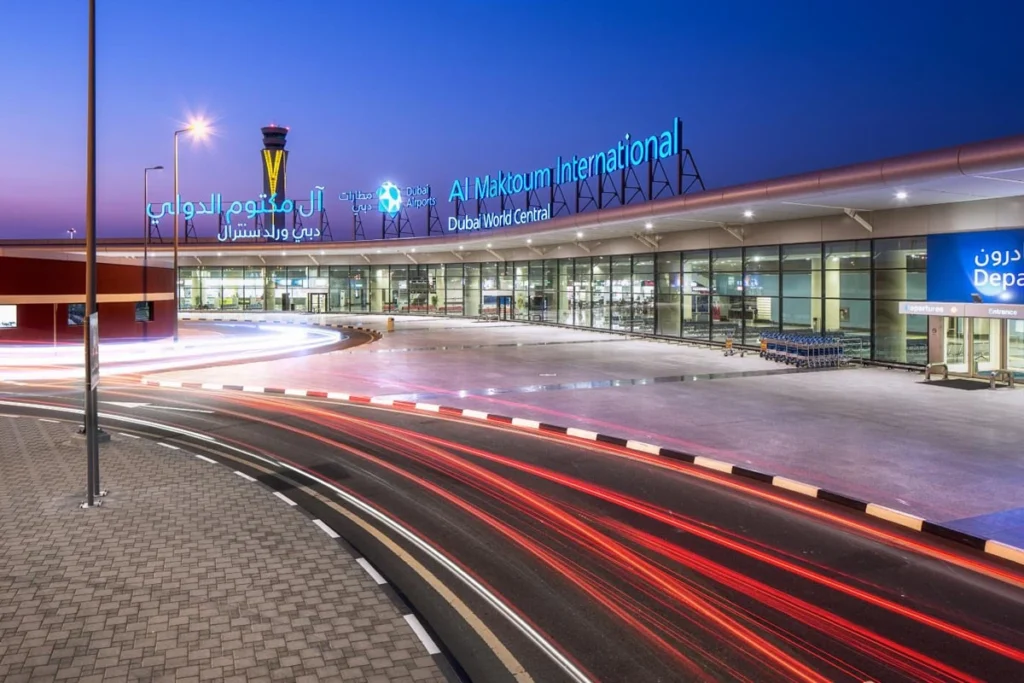
Overview
Dubai World Central (DWC), also known as Al Maktoum International Airport, is designed to be the world’s largest airport in the future. It currently handles cargo flights and limited passenger operations but is expected to expand significantly.
Facilities and Services
- Current passenger capacity: Around 26 million per year.
- Future plans: Expected to handle over 160 million passengers annually upon full completion.
- Connectivity: Direct access to Jebel Ali Port and logistics hubs.
Key Airlines
- Wizz Air
- flydubai
- Qatar Airways Cargo
5. Ras Al Khaimah International Airport (RKT) – A Growing Regional Airport
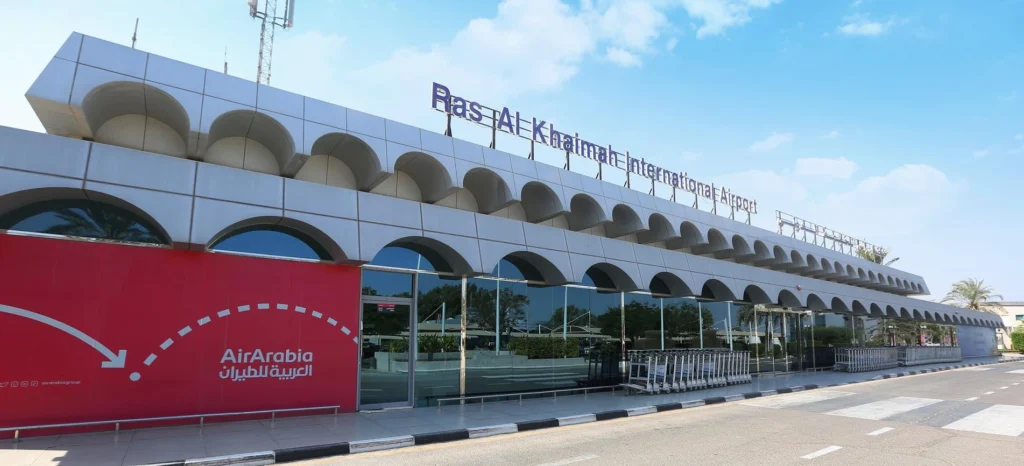
Overview
Ras Al Khaimah International Airport (RKT) is a smaller but rapidly growing airport, particularly for chartered flights and low-cost carriers.
Facilities and Services
- Lounges: Business-class lounge facilities.
- Cargo and Logistics: Growing freight-handling capabilities.
- Airlines: Home to RAK Airways and other low-cost carriers.
Key Airlines
- Air Arabia
- Smartwings
- Air India Express
6. Fujairah International Airport (FJR) – Emerging Aviation Gateway
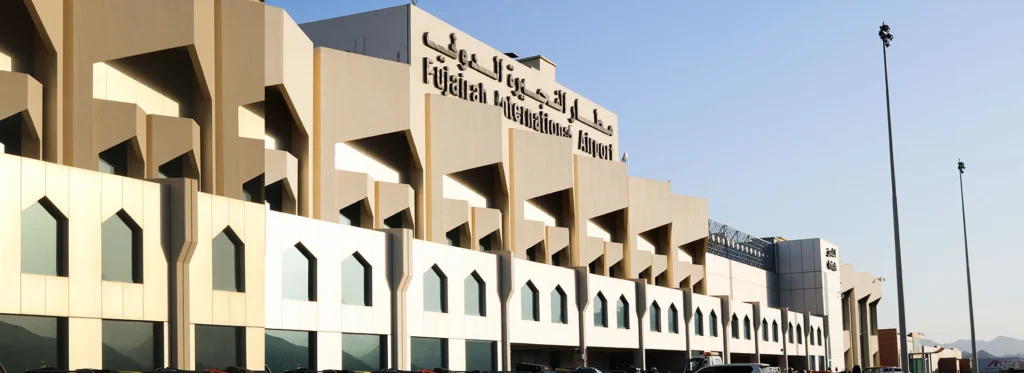
Overview
Fujairah International Airport (FJR) mainly serves cargo and regional flights but is expanding for future commercial passenger operations.
Facilities and Services
- Terminals: One passenger terminal with essential facilities.
- Business & VIP Services: Premium lounges for travelers.
- Growth Plans: Future expansion projects for increased traffic.
Key Airlines
- Rotana Jet
- Gulf Air
Connectivity Between UAE Airports
The international airports in UAE are well-connected through highways, metro, buses, and taxis, making it easy for passengers to travel between emirates. Dubai and Abu Dhabi offer shuttle services, while major roads link Sharjah, Ras Al Khaimah, and Fujairah to the rest of the country.
Future Developments in UAE’s Aviation Sector
With the UAE’s vision to become a global aviation hub, the country is investing billions into airport expansions and technological advancements. Some key projects include:
- Dubai World Central’s full expansion
- Hyperloop transport integration for faster airport transfers
- AI-driven immigration and customs processing
Conclusion
The international airports in UAE are among the most advanced in the world, offering exceptional services, smooth connectivity, and high passenger satisfaction. Whether you’re traveling for leisure or business, the UAE’s aviation infrastructure ensures a seamless journey.

